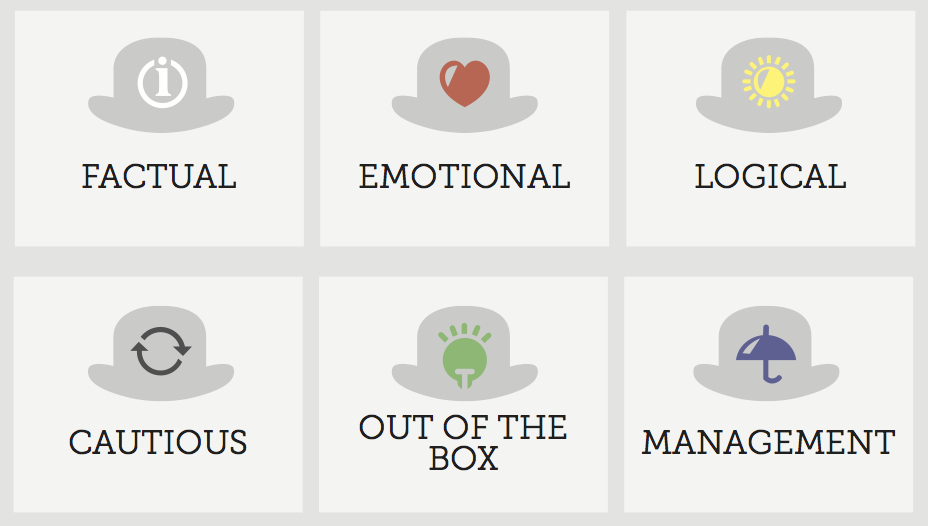Thinking Hats allow a range of different viewpoints and perspectives to be brought into a discussion, whilst still keeping the focus on the issue at hand. It’s a technique which can be used to encourage people to look at a topic from a number of different perspectives, making what might be a very complex issue a stimulating focus point for conversation. The team learns how to separate thinking into six clear functions and roles, getting them to look at all sides of an issue. Structuring the conversation around these different viewpoints helps avoid endless, free flowing debates around topics, and instead helps create a meaningful, focused discussion. This technique was popularised in the book Six Thinking Hats (De Bono E. 1985).
Each hat is a different colour, which indicates a particular viewpoint. In a group setting all team members think about a topic using the range of Hats, helping them focus on the topic from each viewpoint at a time. This also helps getting contributions from all team members. This range of viewpoints can uncover new ways to address a particularly difficult problem, for instance by making an overly familiar issue feel ‘strange’ again, and it helps teams to develop a shared understanding.

